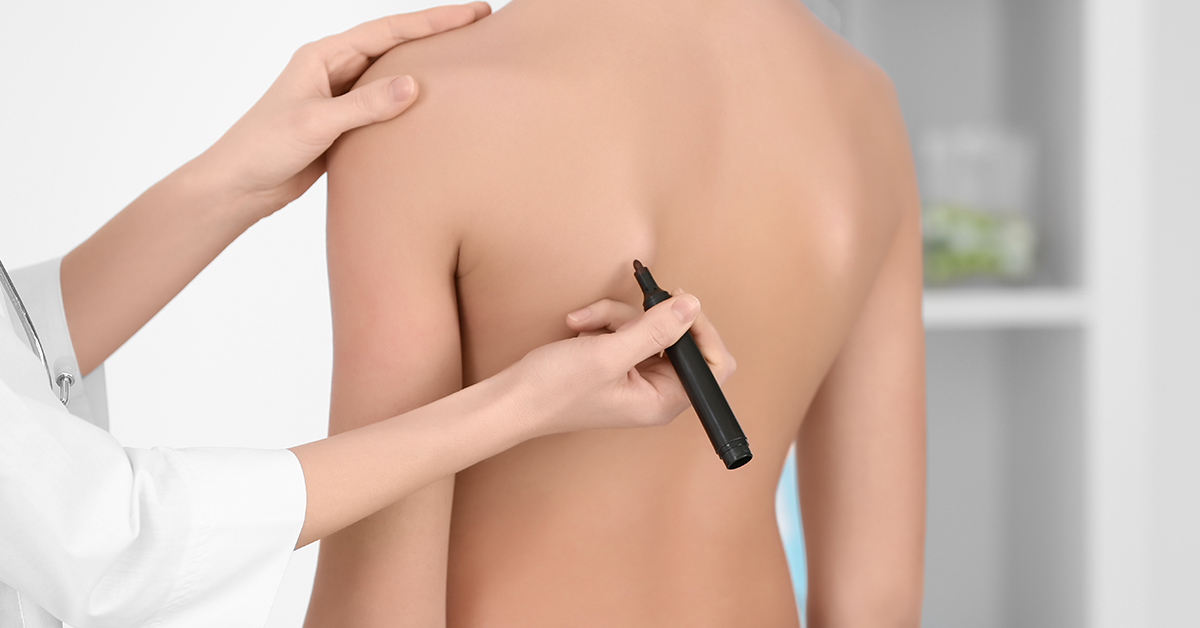
What are Spondylolysis and Spondylolisthesis?
Spondylolysis refers to a fracture at a specific spot in the spine. The pars interarticularis is a small piece of bone involved in connecting the bones of the spine (vertebrae) to one another. Spondylolysis occurs when the pars interarticularis (or simply pars) fractures. In some cases of untreated spondylolysis, the width of the fracture increases, the vertebra becomes unstable and can begin to shift forward. When one of the bones in the spine slips forward it is referred to as spondylolisthesis. The more the vertebra slips forward the greater the chance of nerves becoming compressed (pinched).
The amount the bone has slid forward can be measured (in terms of percentage) and the spondylolisthesis can be classified as:
- Grade I spondylolisthesis: 0-25% slippage
- Grade II spondylolisthesis: 25-50% slippage
- Grade III spondylolisthesis: 50-75% slippage
- Grade IV spondylolisthesis: 75-100% slippage
- Grade V spondylolisthesis: greater than 100% slippage
The majority of adolescents with spondylolysis and spondylolisthesis do not know that they have the condition because they have no obvious symptoms. Higher-grade spondylolisthesis can lead to pain in the legs and also numbness, tingling, and weakness.
To reduce the risk of fractures, adolescents should keep their core muscles strong so that they can help support the lower back. Patients that have spondylolysis should choose activities that do not place their low back at risk for further injury.
Treatment Options for Spondylolysis and Spondylolisthesis
Spondylolysis and spondylolisthesis treatment involves both surgical and non-surgical options. Non-surgical treatment is focused on reducing pain, facilitating fracture healing, and preventing any additional (or initial) vertebral slippage. Unless severe symptoms are present, initial treatment involves only non-surgical options. It is estimated that approximately 80% of adolescents with spondylolysis require only non-surgical treatments. Non-surgical treatment options can be used alone or in various combinations.
Observation
Initial treatment may include observation, rest and activity modification. This may include refraining from sports and any activity that may stress the low back.
Bracing
Bracing can be effective for some patients. A brace is worn to prevent the fracture from getting worse and give it time to heal. These braces (Boston brace or anti-lordotic brace) maintain the low back in a flexed position and limit motion. Therefore bracing decreases the amount of stress on the low back and gives the pars fracture an opportunity to heal. Typically, bracing is initiated for 6-12 weeks.
Physical Therapy
Physical therapy is often used in conjunction with bracing. The goals of physical therapy are core strengthening and improving flexibility (especially of the hamstrings).
Anti-inflammatory Drugs
Nonsteroidal anti-inflammatory drugs (NSAIDs) may be given to both reduce pain and decrease inflammation. Prescription and non-prescription NSAIDs are available. Over-the-counter NAISDs include Advil, Motrin, and Aleve.
Injections
A local anesthetic and an anti-inflammatory agent can be injected around the pars region of the spine. Pain relief, generally, is temporary but may last long enough for the fracture to heal.
Surgery
Surgical treatment may be necessary if:
- Pain persists after extensive conservative treatment
- There is a severe spondylolisthesis (Grade III and greater)
The goals of surgery are to:
- Reduce pain
- Bring the vertebrae back into proper alignment
- Stabilize the spine to prevent further slippage, nerve damage and chronic pain
The main surgical options to treat spondylolysis and spondylolisthesis are direct repair of the pars fracture and/or spinal fusion.




